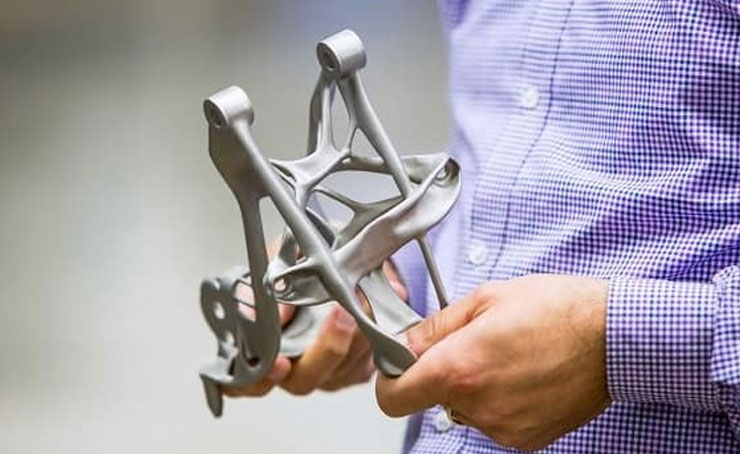Be a Blog Subscriber
Join thousands of manufacturing leaders and professionals who get the Accelerate blog delivered straight to their inbox


I’m excited to share highlights from the recent General Motors (GM) webinar, “The Additive Farm: Growing Towards Production.” Participants got to see a real-world example of how the convergence of cutting-edge technology, changing business needs and the COVID-19 pandemic presented the company with a perfect opportunity to accelerate the acceptance of additive manufacturing.
Ali Shabbir, engineering group manager of additive manufacturing product applications at GM, and Dominick Lentine, team manager of additive manufacturing engineering at GM, provided important insights into GM’s additive manufacturing roadmap, and how it continues to influence automotive production.
Several decades ago GM built a rapid prototyping additive manufacturing lab at its main engineering site in Warren, Michigan, but it wasn’t until the late 2010s that the company created a single, cross-functional additive manufacturing team that has since grown to include more than 20 full-time people. Coincidentally, the team came together — as did the interconnection of four additive manufacturing labs in Warren — just before the COVID-19 pandemic struck. Not only did this allow GM to quickly pivot to manufacture face masks, it also paved the way for extended use of additive manufacturing technology in GM’s automotive realm — leading to savings of weight, time and money.
While GM’s additive manufacturing team is responsible for educating GM’s workforce, supply base and broader network about additive manufacturing technology, and for increasing technology application within those groups, Shabbir simplifies its purpose: “I think primarily what the team likes to do and is responsible for is cutting through the additive manufacturing hype. Our team is really responsible for understanding the technology landscape out there, and delivering real value to the corporation through the technology.”
Shabbir is quick to point out that the GM additive manufacturing team includes not only his and Lentine’s product engineering and manufacturing engineering groups, but also GM’s research and development, creative design and materials engineering groups. As Shabbir explained, the combined groups represent “a holistic dedicated effort of a fairly significantly large team at GM.” But the team goes beyond GM. “We can’t do it all by ourselves, and actually we don’t want to do it all by ourselves,” says Shabbir, noting the contributions of partners such as additive manufacturing equipment suppliers. “At GM, we’re all about working as a cohesive network with the industry.”
Lentine concurs, saying, “This is not a single effort; not something that has happened overnight.” Instead, it’s something that’s been happening over a period of several years via a network of connected industry resources and four interconnected GM labs, including:
According to Lentine, “It took a lot of the expertise and knowledge that we gained from how we utilized this connected group, to respond not only to healthcare professionals and their needs for our community, but to bring that back to General Motors manufacturing and General Motors production parts — and to understand how we can start to deploy some of these resources on a larger industrial scale.
“A lot of what we learned through our COVID-19 response was how we can act quickly — how we can start up manufacturing lines and improve processes with this technology — but historically there’s many different ways within product manufacturing that we can add benefits by using our additive manufacturing capabilities.”
Some of those benefits, says Lentine, are reducing costs in low-volume areas, improving functional performance of parts, decreasing lead times for part production, and reducing complexity and weight in parts and assemblies — ultimately allowing GM to launch vehicle programs more quickly. “Any second we can save in a very long and complicated manufacturing process is a huge improvement to GM’s top line,” notes Lentine.
While additive manufacturing technology has benefited GM, Shabbir says the company’s use of it is ultimately about more than that. “Overall, the additive manufacturing team mission at GM is to set the industry standard for AM application — delivering value, enabling the impossible, and challenging just how we do manufacturing product design today. We want to challenge the status quo and cause a fundamental space shift in automotive engineering at GM, and in the industry as well.”
After attending the webinar, I am more inspired about the future of manufacturing and its workforce and think you will be too. To learn more about additive manufacturing at GM, watch the full “Additive Farm” webinar here.
Join thousands of manufacturing leaders and professionals who get the Accelerate blog delivered straight to their inbox